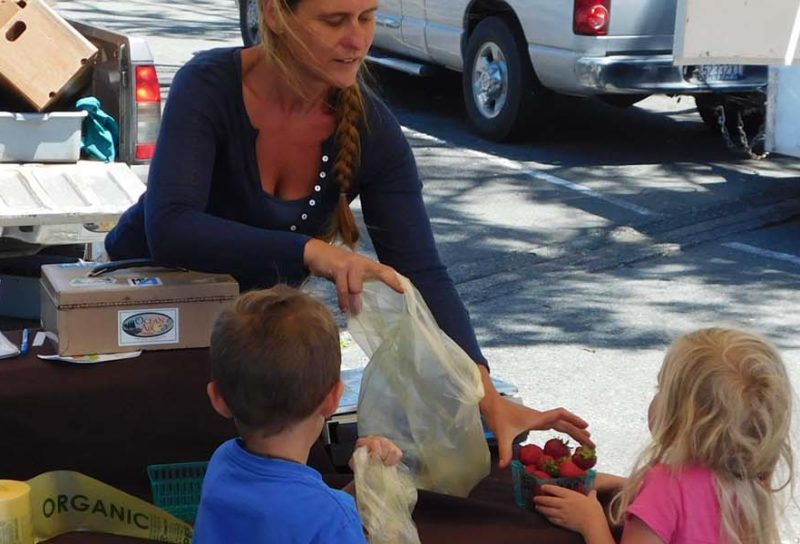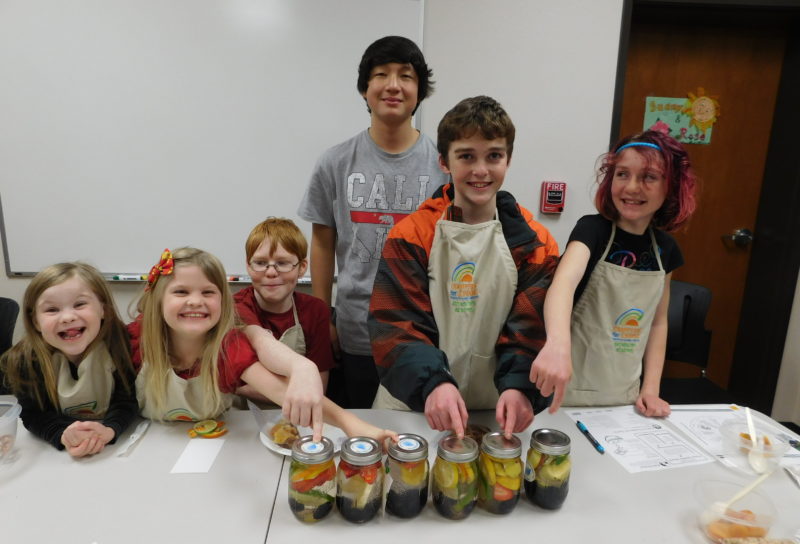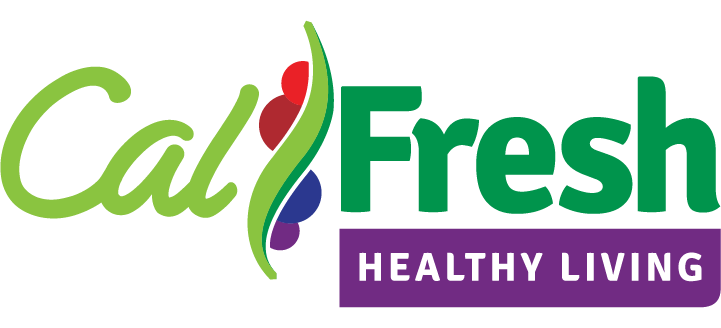
Adopting healthy eating habits early in life can help kids prefer nutritious foods over junk food, and could also prevent your child from adverse weight gain and related health conditions.

Why Should Kids Eat Fruits and Vegetables and Be Active Every Day?
Eating fruits and vegetables and being physically active are simple ways to make your family healthier. These healthy habits can help your kids:
- Concentrate and do better in school
- Feel good about themselves
- Grow and develop strong bodies
- Lower their future risk of diseases like obesity, type 2 diabetes, heart disease, and certain type of cancer
Healthy Kids
Get your copy of healthy kidsHelping kids grow healthy and strong
Help your child learn to eat well and be active. Let your child choose what to eat. Parents put meals and snacks on the table that include food from the food groups. Sit with your child and eat from the foods you offer everyone. They learn from watching you eat. Children will decide what to eat and how much from what you offer.
Tips for Picky Eaters
Picky eating is a normal part of raising a preschooler – as children learn to be more independent and their appetite and growth slows, they become more selective and may even be picky. Ages 2 to 6 are prime years for picky eating, but it should slowly disappear as your child ages. Even as your child becomes a picky eater, refrain from giving in to their food requests and continue serving meals and snacks with a variety of food-group foods. Compromise by including at least two food-group foods during a meal that your child is likely to eat, such as milk, whole grain pasta and cooked peas.
Pressuring your child to eat “just one more bite” can work against you. Kids will see they have the power and will eat less. Let them take the lead on what and how much they eat. You should offer at least one safe food that you know your child usually likes. Once you serve the meal or snack, do not offer different foods.
Tips for picky eaters
- Introduce one new food at a time without pressure to eat.
- Put a serving dish on the table of foods you want to encourage. Give everyone empty plate and
offer very small portions. - Serve familiar foods like bread, fruit and milk at meals and snack time so you know there is
something your child can eat. - Keep offering what you eat. By seeing you enjoy foods, your child is more likely to try them.
Why Family Meal Matter
When was the last time you sat down for a meal with your family? Was it last night, last week or last month? For some families, eating together is reserved for special events and holidays, like birthdays or Thanksgiving. These special occasion meals allow families to connect with each other, strengthen family ties and pass on family cultural traditions. When family or friends come together to share a meal, they are sharing more than just food. Shared meals create time for connection and learning. Your family will eat better when you eat together.
Tips for family eating
- Make time for breakfast, lunch and dinner every day.
- Offer everyone the same foods to choose from.
- Think of meals and snacks as enjoyable times to relax at the table together and talk.
- Make healthy eating fun. Let your child help shop, prepare and serve. Your child is more likely to try foods when they choose and help prepare them.
- Serve family-style meals. Your set out all the ingredients and each person puts together a plate.
- Talk with your child at meals. Turn off electronics when eating.
Eating Healthy For Your Preschoolers
Get your child on the path to healthy eating. Cook together. Eat together. Talk together. Make meal time family time.
- Offer a variety of healthy foods. Choose foods from each MyPlate food group. Pay attention to dairy foods, whole grains, and vegetables to build healthy habits that will last a lifetime.
- Be mindful of sweet drinks and other foods. Offer water instead of sugary drinks like regular soda and fruit drinks. Other foods like hot dogs, burgers, pizza, cookies, cakes, and candy are only occasional treats.
- Focus on the meal and each other. Your child learns by watching you. Let your child choose how much to eat of foods you provide. Children copy your likes, dislikes, and your interest in trying new foods.
- Be patient with your child. Children enjoy food when eating it is their own choice. Some new foods take time. Give a taste at first and wait a bit. Let children serve themselves by taking small amounts. Offer new foods many times.
Healthy Eating for Preschoolers
Download your copy of Healthy Eating for Preschoolers.Kitchen Activities for Preschoolers
A great way to get your preschool child to eat healthy food is to offer the healthy foods frequently. And one way to get them interested in healthy foods is to get them involved in shopping and cooking.
Ideas to get your preschoolers helping with foods and eating healthy:
- Before you leave for the grocery store, ask your child for some ideas about food-group foods and beverages you should buy to feed the family. They may surprise you by naming foods that the family eats, even if they are foods your child skips.
- Make grocery shopping into a learning game of colors, counting and food groups. A trip to the local farmers market can be a fun adventure.
- Give your child a chance to cook/play with unfamiliar foods and beverages at younger ages and handle foods like washing vegetables, tearing lettuce and pouring milk from small pitchers as they get older.
- Exposing kids to a variety of foods from all the food groups – whether in the store, during good preparation or on the family table-encourage them over time to try and learn to enjoy all types of foods.
Healthy Snack Ideas for Kids
Smart snacking is a great way for your young children and preschoolers to meet their daily nutrient requirements that they could be missing at meal times. Children need energy throughout the day, and thinking of snacks as “mini-meals” with foods from the food groups provides that energy and adds nutrients like vitamins and minerals.
- Plan snacks that include 2 to 3 food groups. For example, enjoy a smoothie by blending fruit, plain low-fat milk and ice, vegetables with dip, raisins, peanut butter and celery, dried fruit and nuts, cottage cheese and peaches, and granola bars and vegetables.
- Offer fewer empty-calorie foods. Cookies, candy, donuts, chips, French fries and bacon are often higher in empty calories from added fats or sugar.
- Eat more nutritious foods. Children may be more open to trying new foods at snack times. Serve vegetables with a favorite food like cheese or a dip. Offer bite-size portions to encourage trying a new food.
- Make snacks fun by chopping colorful fruit and vegetables into small portions or using cookie cutters to cut sandwiches into different shapes.
Free Kids Cookbooks and Activity booklets
Click here to contact us to request your free booklet, or download the digital version below.
Kids Get Cooking Cookbook
Click here to downloadKids Get Cooking Cookbook (Spanish)
Click here to downloadCooking with Potter the Otter
Click here to downloadActivities with Potter the Otter
Click here to downloadTreasure Hunt
Click here to download
Early Care and Education
Calfresh Healthy Living recognizes the importance of focusing on preschool age group as part of nutrition education and obesity prevention efforts. Early childhood is an important time to help establish healthy habits and to expose children to a variety of healthy foods. Education can also be focused on parents and other adult caregivers (such as childcare providers, pre-school teachers, aides, afterschool program leads, etc.). Del Norte CalFresh Healthy Living have been working with the partners in Early Childhood settings; Head Start sites, State Preschools, WIC, First 5, Family Resource Center of the Redwoods, and Child Care Council by providing evidence-based nutrition education and physical activity promotion and opportunities directly or through train the trainer models to the preschool aged children and families, child care providers and educators.
Del Norte CalFresh Healthy Living supports developing of healthy and active early care and education environments. This includes aspects such as serving and promoting healthy foods and beverages, implementing healthy celebrations and meetings, and providing multiple opportunities for daily physical activity—all supported by healthy site policies and systems. According to the CDC, implementing wellness policies and training caregivers in best practices for physical activity and nutrition can promote healthy weight for young children in child care settings. Therefore, all ECE programs should have customized physical activity and nutrition templates that include the centers’ physical activity and nutrition practices. Once adopted, make the template easily accessible and available for everyone.
Early Care and Education Physical Activity and Nutrition Policy and Templates: The Early Care and Education Physical Activity and Nutrition Policy and Templates are customizable and child care providers can use the templates in their entirety or can adapt, and/or adopt portions of the templates as desired.
Early Care and Education Physical Activity Toolkit for Preschool-Aged Children: The Early Care and Education Physical Activity Toolkit for Preschool-Aged Children provides practical tools, including easy-to-use activities, skill cards, and planning suggestions for use with young children ages 3 to 5 years old.
